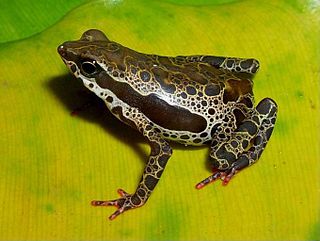 W
WAtelopus spumarius is a species of toad in the family Bufonidae. It is native to Brazil, Colombia, Ecuador, French Guiana, Guyana, Peru and Suriname.
 W
WBokermannohyla circumdata is a species of frog in the family Hylidae. It is endemic to Brazil. Its natural habitats are subtropical or tropical moist lowland forests, subtropical or tropical moist montane forests, and rivers. It is threatened by habitat loss.
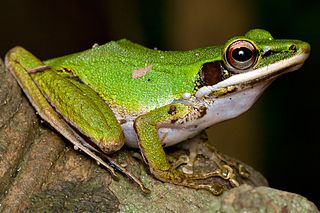 W
WChalcorana raniceps, also known as the copper-cheeked frog, white-lipped frog, or Peters' Malaysian frog, is a species of "true frog" in the family Ranidae. It is endemic to Borneo, including Brunei Darussalam, Kalimantan (Indonesia), and Sarawak (Malaysia), although it is likely to occur more widely. Previously mixed with Chalcorana chalconota and believed to have much wider distribution, its range was delimited to Borneo in the revision of "Rana chalconota" complex by Robert Inger and colleagues in 2009.
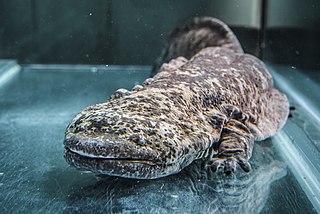 W
WThe Chinese giant salamander is one of the largest salamanders and one of the largest amphibians in the world. It is fully aquatic and is endemic to rocky mountain streams and lakes in the Yangtze river basin of central China. Either it or a close relative has been introduced to Kyoto Prefecture in Japan and to Taiwan. It is considered critically endangered in the wild due to habitat loss, pollution, and overcollection, as it is considered a delicacy and used in traditional Chinese medicine. On farms in central China, it is extensively farmed and sometimes bred, although many of the salamanders on the farms are caught in the wild. It has been listed as one of the top-10 "focal species" in 2008 by the Evolutionarily Distinct and Globally Endangered project. The Chinese giant salamander is considered to be a "living fossil". Although protected under Chinese law and CITES Appendix I, the wild population has declined by more than an estimated 80% since the 1950s. Although traditionally recognized as one of two living species of Andrias salamander in Asia, the other being the Japanese giant salamander, evidence indicates that the Chinese giant salamander may be composed of at least five cryptic species, further compounding each individual species' endangerment.
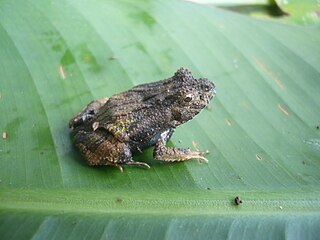 W
WEdalorhina perezi is a species of frog in the family Leptodactylidae. It is found in Brazil, Colombia, Ecuador, and Peru, and possibly Bolivia. Its natural habitats are subtropical or tropical moist lowland forests, subtropical or tropical moist montane forests, and freshwater marshes.
 W
WIngerophrynus divergens is a species of toad in the family Bufonidae. It is found in Malay Peninsula, Borneo, Sumatra, and Natuna Islands. It occurs in well-drained lowland rainforests. It breeds in standing water and slow-moving intermittent streams. It is widespread in suitable habitat but not abundant. It is threatened by habitat loss caused by clear-cutting.
 W
WLimnonectes khasianus, commonly known as the corrugated frog, rivulet frog, or sometimes (ambiguously) called "flat-headed frog", is a species of frog in the family Dicroglossidae. It is found in Brunei, India, Indonesia, Malaysia, Myanmar, Thailand, and possibly Bangladesh and Bhutan. Its natural habitats are subtropical or tropical moist lowland forest, subtropical or tropical moist montane forest, rivers, intermittent rivers, freshwater marshes, and intermittent freshwater marshes. It is not considered threatened by the IUCN..
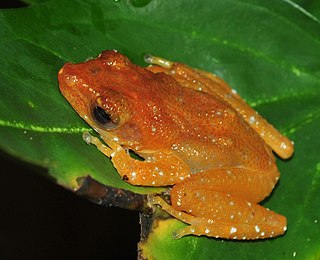 W
WNyctixalus pictus, also known as cinnamon frog, cinnamon treefrog, cinnamon bush frog, painted Indonesian treefrog, and white-spotted treefrog, etc., is a species of frog in the family Rhacophoridae. It is found in the Malay Peninsula, the Philippines, and parts of the Greater Sunda Islands.
 W
WThe short-footed frog is a small, burrowing frog native to eastern Queensland, Australia.
 W
WTylototriton verrucosus is a species of newt found in the Indian subcontinent and Southeast Asia. Common names include: Himalayan newt, crocodile newt, crocodile salamander, Himalayan salamander, red knobby newt.
 W
WZakerana brevipalmata is a species of frog found in the Western Ghats in southern India. Zakerana brevipalmata is a little-known and uncommon grassland frog associated with waterlogged or marshy areas, but it has also been recorded from suitable wet patches of forest and lightly degraded former forest.